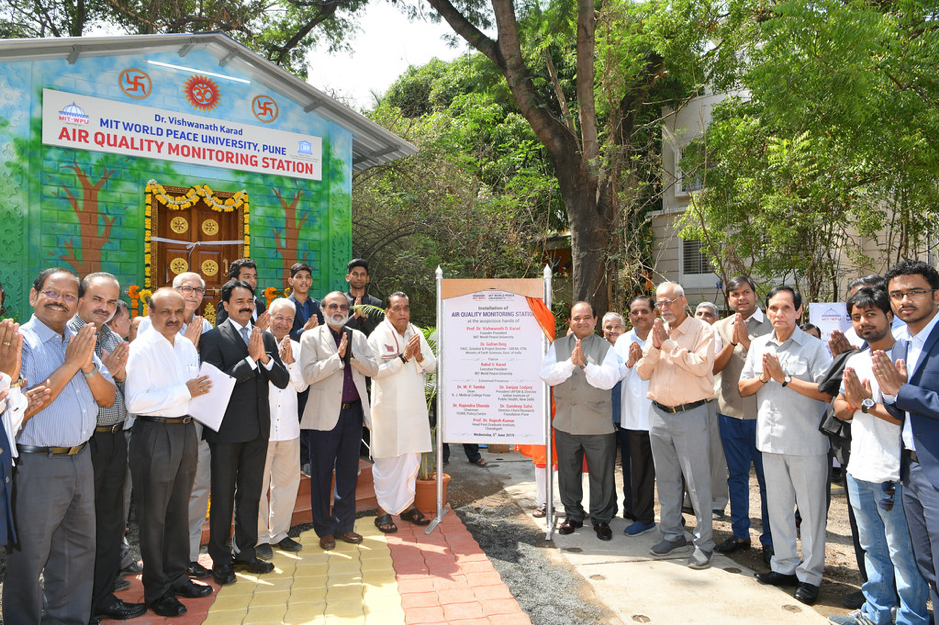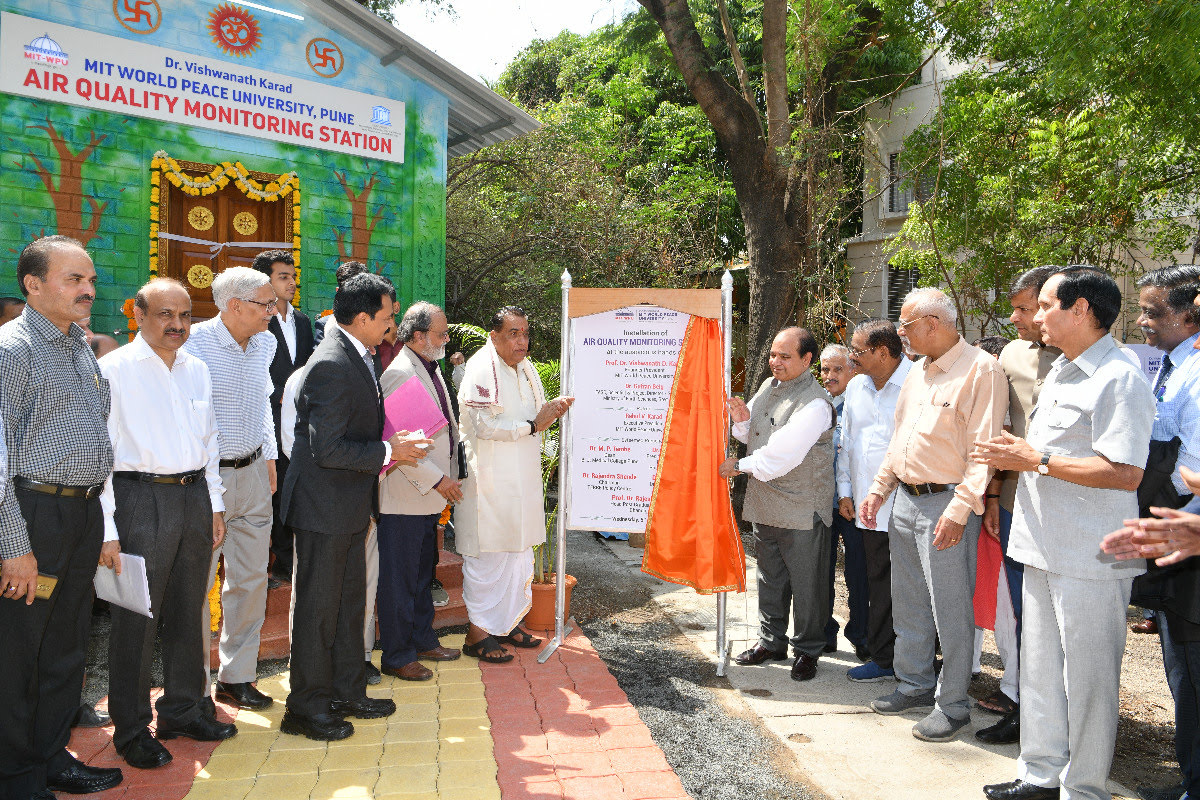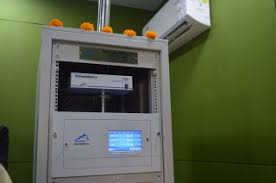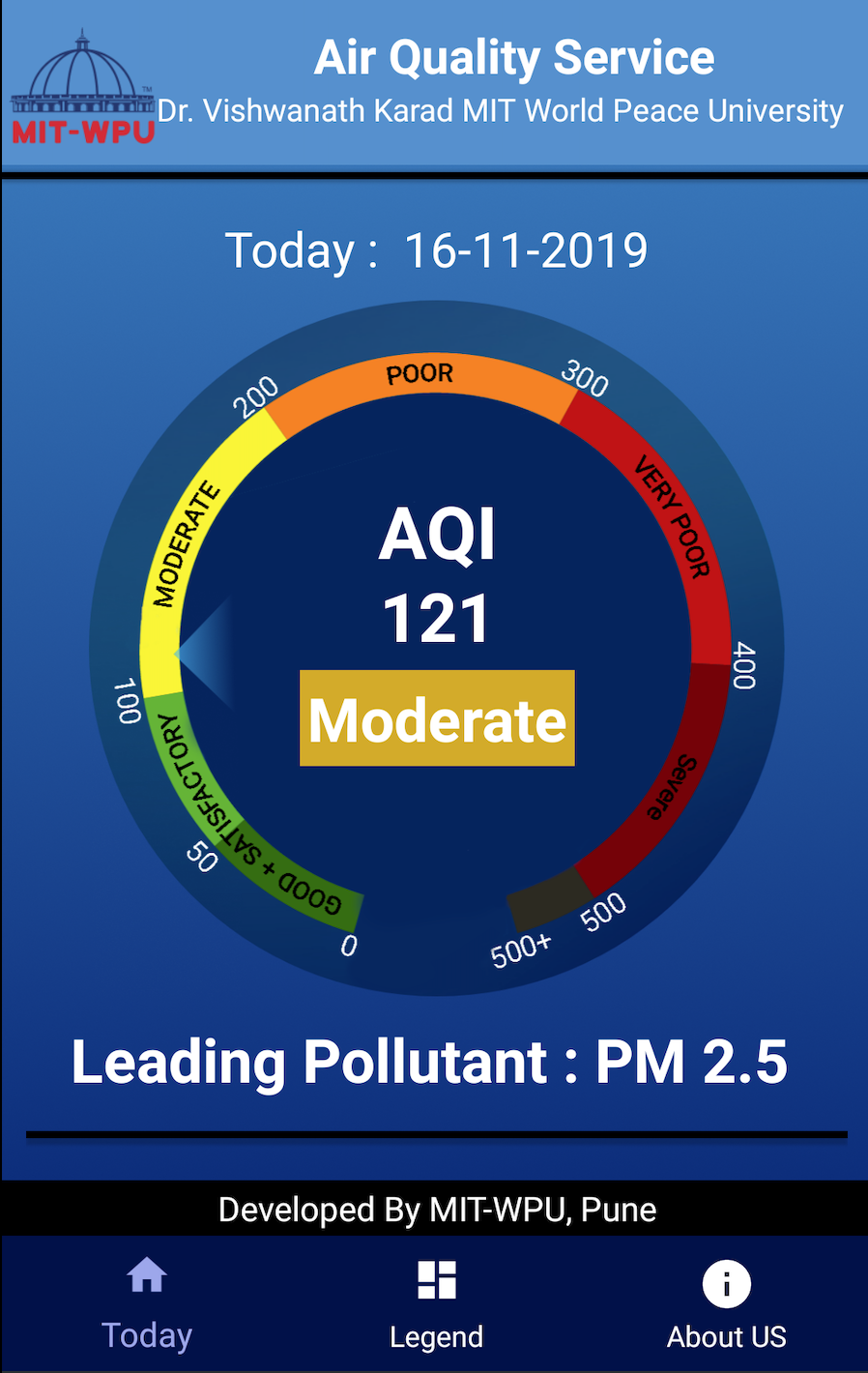SCCN Blogs
Measuring Pollution
Universities are getting ready: Setting up air quality monitoring stations
'Schools across Delhi and Noida region to remain closed, low visibility due to heavy smog disrupted flight operations at the Delhi airport, with flights diverted to other airports and departures and arrivals getting delayed' was the news flashing on November mornings.
While Delhi's overall Air Quality Index (AQI) according to SAFAR (System of Air Quality and Weather Forecasting And Research) was recorded at the highest of 625, the concentration of harmful pollutants PM10 and PM2.5 were at 648 and 475 micrograms per cubic metre (ug/m3) respectively. An AQI between 201 and 300 is considered 'poor', 301-400 'very poor' and 401-500 'severe'. An AQI above 500 falls in the 'severe plus' category.
MIT-WPU, the first university in the world with unique Peace Studies Program celebrated the 5th June - World Environment Day 2019 in a unique, smart and futuristic way installed the Air Quality Monitoring Station (AQMS) on its premises to measure Air Quality (PM2.5 and PM10). This is a research-based initiative of integrating Air Quality with health advisories under the Smart Campus Cloud Network (SCCN), and technical support of the Indian Institute of Tropical Meteorology (IITM). Dr Gufran Beig, Scientist G and Project Director SAFAR, IITM chaired the event and shared detailed insights on issues and preventive measures related to air pollution.
Air quality monitoring actually aids in assessing pollution levels against ambient air quality standards. Vigorous monitoring helps in alerting people and initiating actions in case of extreme pollution. Monitoring air quality is also significant as the policymakers can accordingly frame policies and strategies to curb air pollution, and for the environmental experts to understand the impact of policy changes.
Along with that, a Mobile App– 'AQI' developed by the students of MIT-WPU was also launched. It displays the online Air Quality Index on a real-time basis along with some critical messages for preventive and corrective actions. The team of students – Dheeraj Komandur, Aditya Khochare, Shebin Silvester, Uday More, Gaurav Sarawgi and Ashutosh Gugnani under the guidance of Dr Krishna Warhade and Dr Mangesh Bedekar of MIT-WPU decided to be good campus managers to address Air Pollution.
For MITWPU, World Environment Day also coincides with its Foundation day. On the same day in 2017, at the hands of Hon. Prakash Javadekar, Cabinet Minister of the Government of India launched the transformation of the MIT WPU campus into a smart and sustainable campus under SCCN, a network that brings the global universities in partnership with the Sustainable Development Goals (SDGs) of the United Nations.
The launch of AQMS in 2019 is yet another milestone in the continuation of the SCCN initiative for "Transforming the MIT-WPU campus into a SMART campus", being mentored by Rajendra Shende, Prime Mover of SCCN and Former Director UNEP.
A comprehensive report on various measures/actions taken in the MIT-WPU campus in the year 2018 complying with the SDGs was also released as a part of SCCN activities. MIT World Peace University is committed to complying with all the United Nations SDGs and organizes various events for sensitizing the youth on the environment and ecology.
Real-time monitoring plays a key role in calculating air quality index (AQI) to issue health advisories as well as form action plans to meet standards. As of January 2019, the air quality monitoring network consists of 731 operating stations, as compared to 342 operating in 2016.
The Smart Campus Cloud Network (SCCN) facilitates colleges and universities within its network to mainstream the future policymakers and policy-implementers in implementing the SDGs by promoting the sharing of information on transformative actions undertaken by students and faculties on the campus. More importantly, SCCN is now encouraging every campus to deploy digital technologies of measuring air quality and take steps within the campus to fight the problem of air pollution.
As a result, universities are coming up to counter this problem by having air quality monitoring stations (AQMS) on their campuses. Colleges like MIT-WPU, IITM and Bharati Vidyapeeth are all equipped with their own Air Quality Monitoring Stations on their college campuses. Universities are getting ready to combat the menace of air pollution by generating awareness of air quality and taking innovative steps towards sustainability.
When you subscribe to the blog, we will send you an e-mail when there are new updates on the site so you wouldn't miss them.








Comments